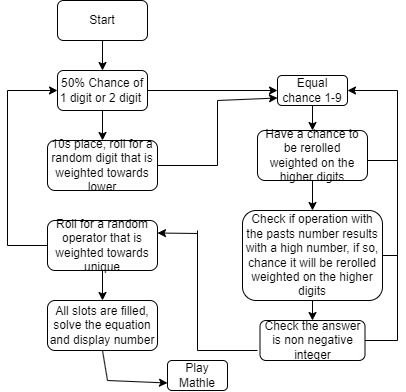| Class | Accomplishments |
|---|---|
| CSI | Learn Swift and developed a basic understanding on programming |
| CSII | Created many projects including sudoku,Schedule-Builder, and ISP |
| CSIII | Digital Portfolio |
During my junior year of high school, I was in Computer Science II. My group had based our ISP on a problem with a trend of that time. Instead of playing classical phone games such as Clash Royale and Solitare, people were playing wordle and mathle. However as my group and I played more mathle, we reached the conclusion that mathle was becoming boring and redundant. The big concept of the project was to generate a random equation that would be applicable for poeple to guess. We needed to set some parameters first. We needed numbers with either 1 or 2 digits. When numbers hit 3 digits, calculations can become to tedious. For example 365 x 252. Doesn't sound very fun. Another thing we had to make note of was PEMDAS. It needed to follow the order of operations if numerous operands were involved. Although we ruled out triple digit numbers, we wanted to give some control of dificulty to the user. That is why we made it infintly expandable. In order to keep things simple, we also set a resitriciton to only let the final result be a positive integer. The applications and software we used was vscode as well as java. One important and interesting about this ISP, was controlling probability. We made it less likely to get high numbers and selected numbers less likely to appear again in the same equation.

This descriptive and easy-to-understand flowchart, shows the original line of thought behind the program.
This is the code that generates every single digit, no pun intended. The chance of a number changes after every number is generated.
A number is weighted differently based upon how often it is generated in an equation. The more times it is generated, the less likely the next number is that same number. This is the formula used for the chance a digit will be used.